A "paradigm shift" in agriculture can massively boost farmers' profits and crop diversity, curb pests, and eliminate the need for tilling, pesticides and herbicides, scientist Jonathan Lundgren claims.
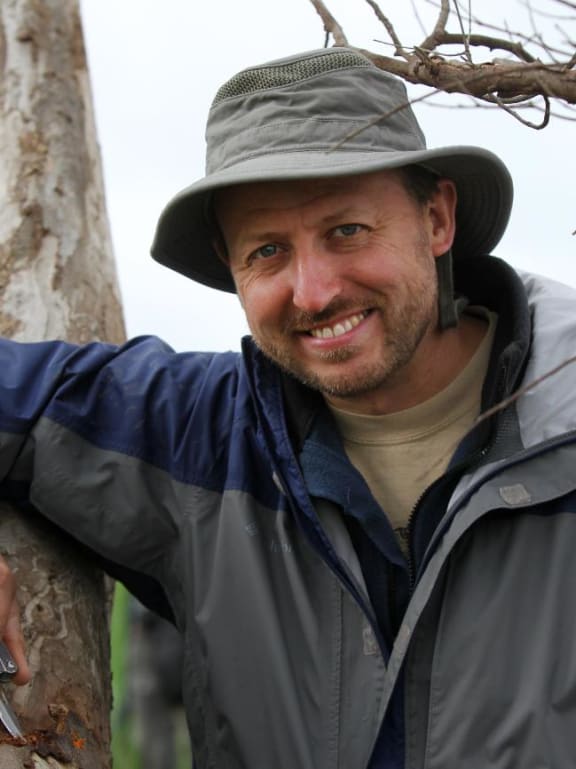
Jon Lundgren Photo: Supplied
Dr Lundgren received the Presidential Early Career Award for Science and Engineering from Barack Obama in 2015 during his 11-year stint at the US Department of Agriculture.
An agroecologist and entomologist, he later filed a whistleblower suit against the agency for suppressing his research on pesticides.
Now he's the director of non-profit regenerative agriculture research centre Ecdysis Foundation, and chief executive of the Blue Dasher Farm in South Dakota.
Regenerative agriculture, he says, flies in the face of conventional farming wisdom.
"I'm an entomologist by training - and we found that the insecticide-treated conventional corn fields had 10 times more insect pests than the regenerative fields that had never seen insecticide use.
"That's not supposed to happen."
Instead of using a research farm, his earlier research on regenerative farming took a different approach, surveying and sampling several variables - biodiversity, soil quality, yield and profit on the best regenerative-style farms in four states in the northern US.
That was then compared to top conventional farms nearby.
Fewer pests was not the only surprising finding: regenerative fields had 78 percent higher profits over traditional corn production systems despite 29 percent lower yields.
"Farming for yield is not farming for profit," Lundgren says.
"Especially in the US at the moment, corn is farmed at a loss, an economic loss: it's being subsidised by government in order to keep farmers producing.
"So they get great yields, but they spend so much money to produce those yields that they're not making the profits that they should be."
No till - 'I make money off my weeds'

Photo: 123rf
Dr Lundgren says industrialisation aimed to keep people from starving by using technology to produce food, "but we just plateaued out".
"We've degraded our natural resource base so much now that we're in trouble if we don't start to figure out how we grow food, while regrowing that natural resource base that farming needs."
The first way to do that is not tilling the soil.
"The soil is a living thing and people don't realise that - they think of it as dirt ... and tillage, what it ends up doing is it kills the soil, the biology in the soil, and then it prohibits that soil from growing again."
He says a group of Russians came to visit Blue Dasher farm and were surprised.
"They said 'boy, you've got some weeds out there' and I looked out at the field and I turned to them and I said, 'I don't see any weeds, I see forage'.
"If you assume that you've got two poisons and that those are your only two options 'well this poison's less bad than that other poison' … I guess, 'boy, i'll pick the less bad poison'. But the reality is that is not true: those are not your only two options.
"This is the common perception - that you've got two ways of killing weeds: tilling and herbicides. That's a really a narrow view. Altering crop rotations; including perenniality within your rotation; including livestock - I make money off of my weeds."
"Why would I lose money by trying to add inputs to control this perceived weed problem when I could raise livestock and take meat off of that piece of ground? So changing your perception is really a fundamental aspect of regenerative systems."
Second principle: Never leave bare soil
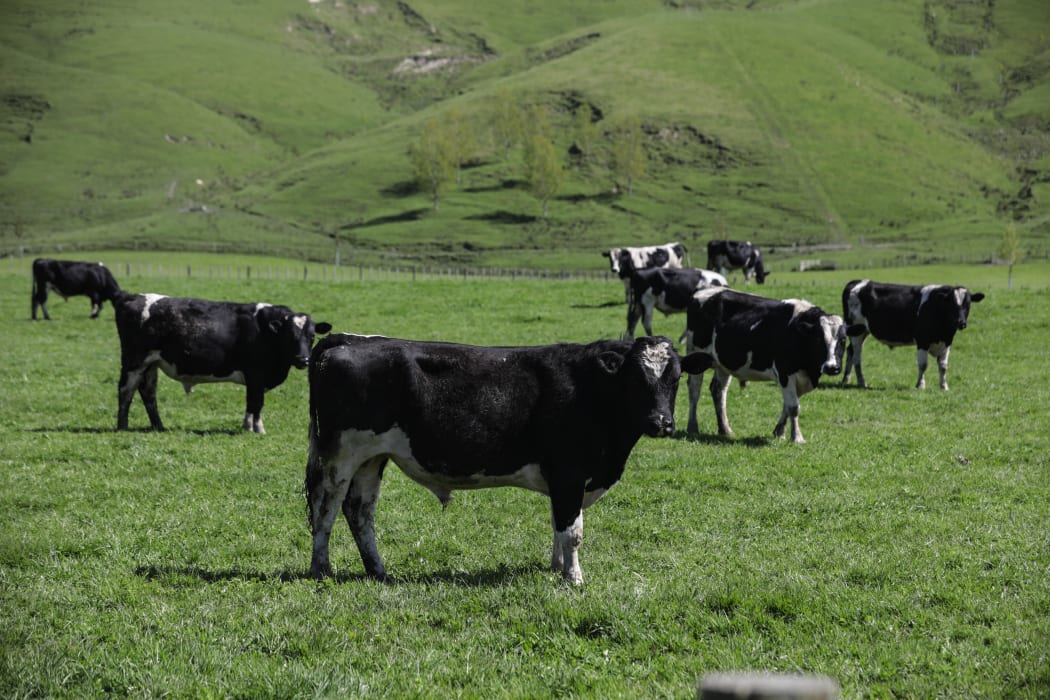
Photo: RNZ / Richard Tindiller
Dr Lundgren says the way to manage weeds without tillage and herbicides is by putting a cover crop down so that the soil is not left bare.
"The energy for a farm does not come from a jug - it comes from the sun - and the only way you capture that energy from the sun is through plants.
"You have to cover that soil all the time, that feeds the biology that's down there - be it microbial, be it insect life, be it fungi.
"It's holding your soil down, it's feeding your soil biology, it's eliminating your need for pesticides, it's eliminating your need for typical fertilisers, and then in the spring what you end up doing is you've got biomass that's accumulated with that cover crop. You send the animals in."
He says the cover crop out-competes weeds and then as the animals reduce that plant population farmers can then no-till sow another crop.
"When they fostered that life, the plants were healthier; the plants were able to resist those pests more easily; it provided habitat for things like predators that ended up eating a lot of the crop pests; it made the plants more difficult for the pests to find."
Maximising profits
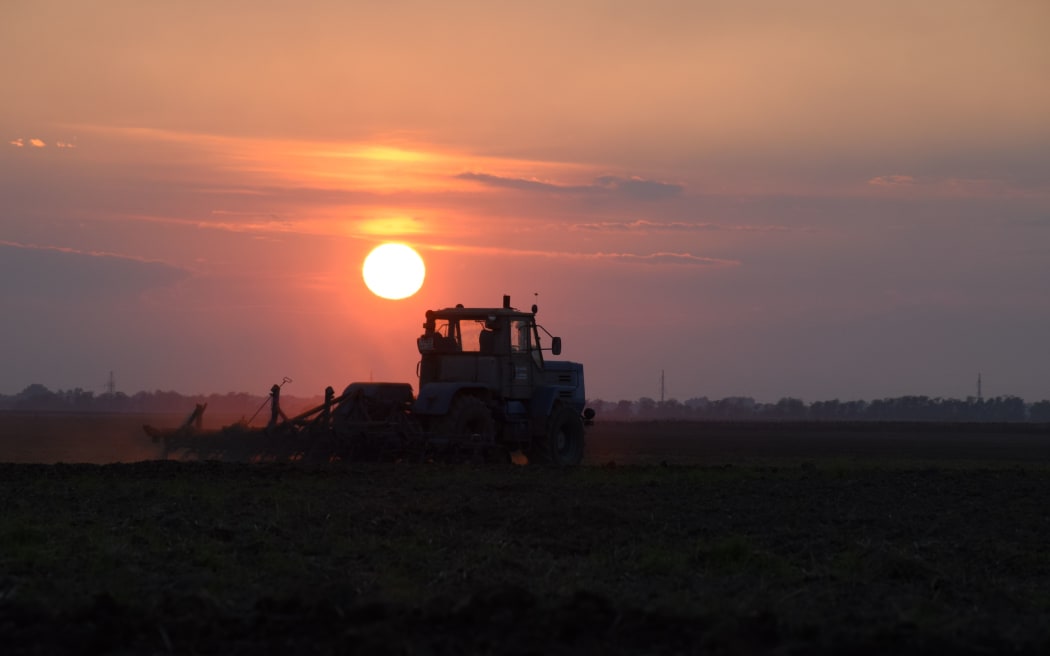
Photo: 123rf.com
So how does not tilling or using poisons lead to big profits? Dr Lundgren says it's a combination of things.
"They spend a lot less on seed: right now in the US most of the corn seed is genetically modified to resist insect pests, as well as to make them tolerant to the herbicide glyphosate … and so it's very expensive that additional cost of seed.
"Also these regenerative farmers didn't have to buy fertilisers or at least they spent a lot less on it, and that made it a lot more cost effective to be producing."
He says premiums from selling the product as organic was also part of the reason for the 79 percent profit difference, but many regenerative farmers were not organic - they were simply marketing smarter.
"In the US a lot of grain is simply grown and then sold off to the local co-op … who then markets the product to wherever they're going to market and ships it off to wherever they're going to ship it.
"[Regenerative farmers] would just be growing things differently, or locally marketing their grain products so that more of the profits stayed on the farm."
Those bigger profits for farmers do come with a price - lower yields - but Dr Lundgren says that's not such a big problem.
"Food insecurity is not a production problem, food insecurity is a distribution problem. We're already producing enough food in excess of what we need to feed the world right now.
"In the US, we devote about 10 percent of the … terrestrial land surface to corn and soy beans in the lower 48 states - 10 percent of our land - we eat, I think, 2 percents of our soy beans and 8 percent of our corn.
"The rest is burned up in our cars, the rest is fed to beef that evolved to eat grass not grain, and so the system is really broken."
Regenerative or organic - what's the difference?
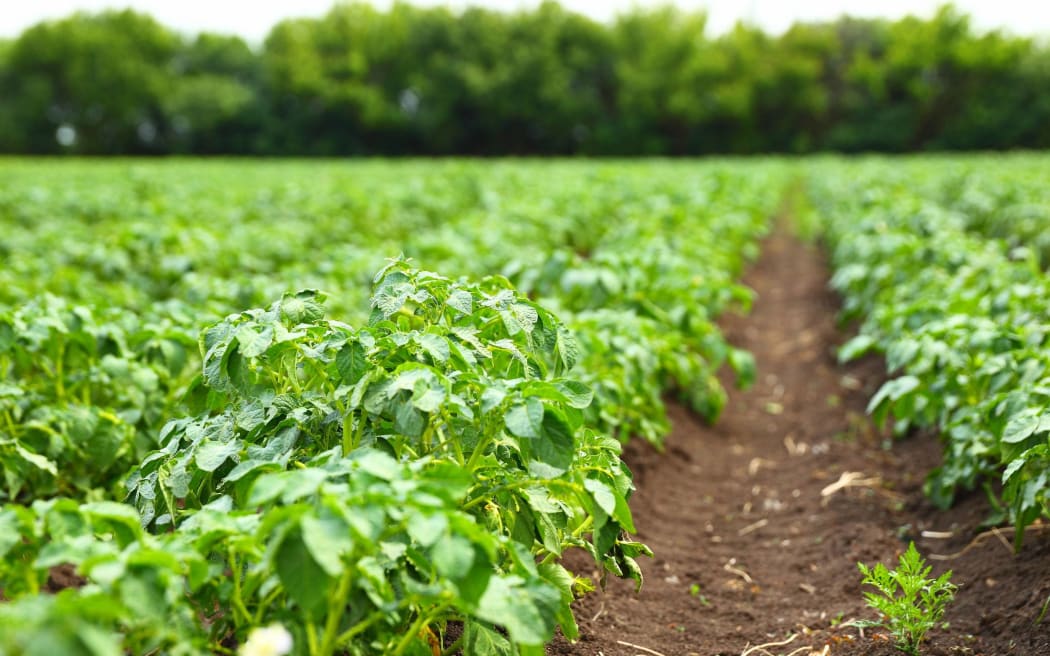
Potato crops. Photo: 123RF
Dr Lundgren still uses herbicides on his farm - for now.
"I'm trying to get off of those herbicides as quickly as I can - our farm is fairly new, we've had three growing seasons - but not because fundamentally herbicides … are the devil.
"It's because I don't want to spend money.
"I don't use insecticides, I don't use fungicides, I don't use chemical fertilisers."
He says the approach to using herbicides is also very different.
"We're not using them as an eradication campaign [which] flies in the face of everything we know as ecologists - eradication does not work."
He says that while about 30 percent of the regenerative farmers they studied for his paper were farming organically, the 'organic' label is meaningless - because the soil is not necessarily healthy.
"I've seen horrible organic operations that I wouldn't eat the product of, and I've seen really good conventional operations where the nutrient level is really high."
Why risk unforeseen costs?
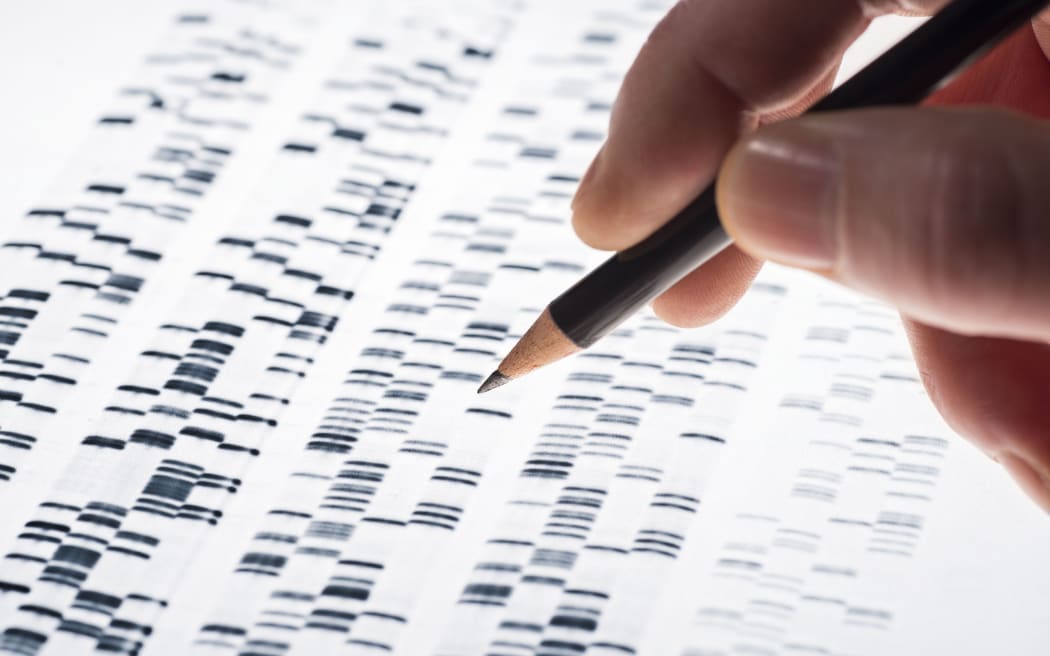
Photo: 123rf
Genetic modification is another tool in many modern farmers' arsenals that Dr Lundgren says is unnecessary.
"I think they're a tool, but I think they're trying to solve a symptom of a problem and frankly I just don't need 'em."
He says it's hard to know what the benefits are versus unforeseen costs.
"The longer that I have pursued risk assessment, the more clear that … fundamentally we cannot see all ends when we're trying to introduce these chemistries out into the environment."
That's also true of some pesticides - the products may have been tested but the long-term effects are hard to predict until they've been tested - or used - in the long term.
"Glyphosate was presumed safe for a long time and now we're almost daily just inundated with the problems associated with this herbicide and it's showing up everywhere.
"What it does is it chelates micronutrients down in the soil to make them unbioavailable to the plants.
"That disrupts the plant's ability to accumulate these things; it also necessitates nutrient additions in the form of chemical fertilisers; it also has direct toxicity that we didn't foresee before and it in part - maybe the largest part of the way that glyphosate ends up hurting larger organisms - is that it disrupts microbial communities."
Neonicotinoids and USDA whistleblowing

Monarch butterfly. Photo: Supplied
Dr Lundgren says the same principle extends to neonicotinoids, it was his work this area that caused such a controversy with the US Department of Agriuclture.
He found neonicotinoid traces in milkweed, on which the monarch butterfly relies, was ravaging monarch populations.
The monarch butterfly in North America is critically threatened, and is at 10 percent of its historic population, he says.
"It wasn't a surprising study ... insecticides killed monarchs, this isn't earth shattering news right? But it was turning up in the milkweed, and it wasn't supposed to be there.
"So we went through all of the correct protocols, I got all of the approvals that I needed and then we got interviewed by one of the larger public radio stations and that interview got a lot of press.
"Suddenly they [USDA] said 'by the way you didn't have all of the approvals in place'. I'm like 'what, what are you talking about? we've been through everything'.
"I was doing my job and now I was being punished for it."
He says the USDA later did a survey of its roughly 2000 scientists and found about 10 percent experienced similar suppression.
"So, I mean, 200 scientists had their work suppressed for political reasons - for reasons other than scientific merit. And that should not happen, but it happens all the time."
'Science does not provide truth'

Photo: 123RF
Dr Lundgren says it's an example of how science can be easily manipulated.
"The idea that science is conducted without personal belief systems, the idea that science is not affected by personality is absolutely and completely false.
"The questions that we ask are affected by our belief system.
"Science does not provide truth ... it provides a framework for assessing."
Despite this, he says his work has not become less scientific since leaving the USDA.
"Absolutely not, our science is some of the top in the world. We publish in some of the top scientific journals still and we have tremendous impact over our research as a result - the graduate students that we have are second to none."
However, he says the way the USDA has used science has not been to innovate or reinvent agriculture, but rather to prop up the same system that simply doesn't work.
"Rather than using science to reinvent our food system, we've used science for so long to simply maintain a broken paradigm."
Mass extinction and neonicotinoids in NZ

Wasps cost New Zealand millions of dollars a year in agricultural losses and ecological damage. Photo: CC BY 2.0 Martin Cooper
While he's not keen on neonicotinoids in farming, he says he understands the arguments of those who want to use them to combat invasive wasp species in New Zealand.
"Invasive species and your invasive wasps problem, that is a tough nut to crack and I do concede that.
"Ecosystems are in such a state of flux at the moment aren't they? I mean we're introducing species … and redistributing species at a planetary scale that planet earth has never, never experienced anything like it before."
He doesn't seem to have a ready answer to the problem, but isn't confident neonicotinoids are one either.
"To think that introducing a chemical pesticide is somehow going to tip the balance? I don't know.
"We're not going to eradicate wasps from New Zealand. In the case of farming, what I'm arguing is that they're not as needed as were once thought.
"Who can drive through Iowa and the sea of corn and soy beans and cows - 99 percent of the land surface or something like this of that state has been transformed into three species.
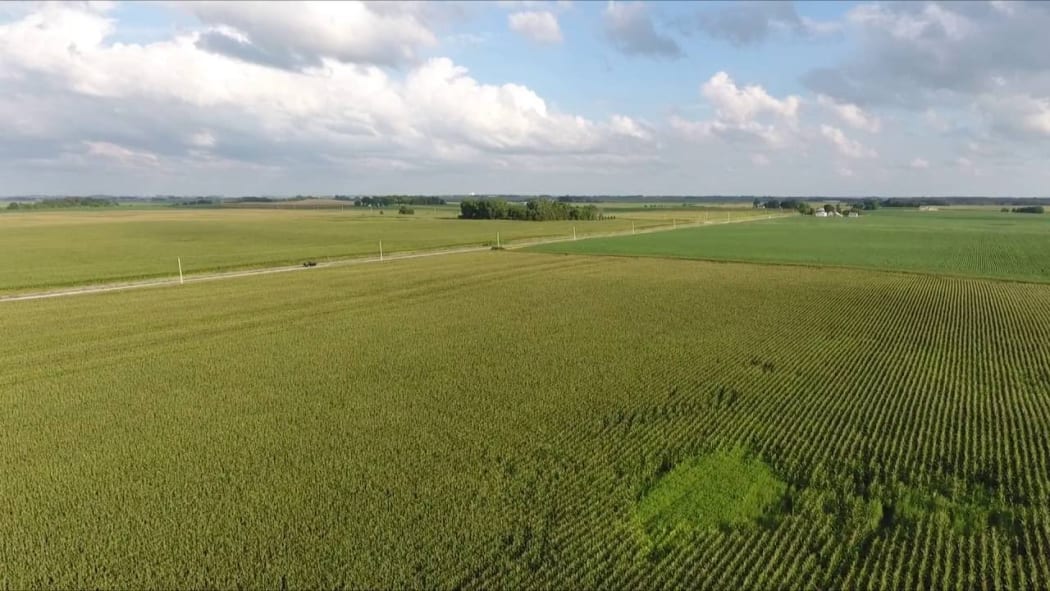
Iowa State University reports more than 85 percent of the state's total acreage is farmed, largely soy and corn fields. Photo: Public Domain / Wikimedia Commons
"Who can drive through that and say that that's okay? And our land grant university system and our academic research system is the one that produced it.
"The status quo is simply not good enough anymore. This planet's facing some really serious challenges right now and if we don't do something about it - thinking outside of the box - the planet will be okay but we won't be on it."
Dr Jonathan Lundgren received his PhD in Entomology from the University of Illinois in 2004 and was a professional pesticide evaluator with USDA for 11 years.
He is in Aotearoa next week for a workshop on Conservation Biological Control of Invertebrate Pests, hosted by the Bio-Protection Research Centre.

